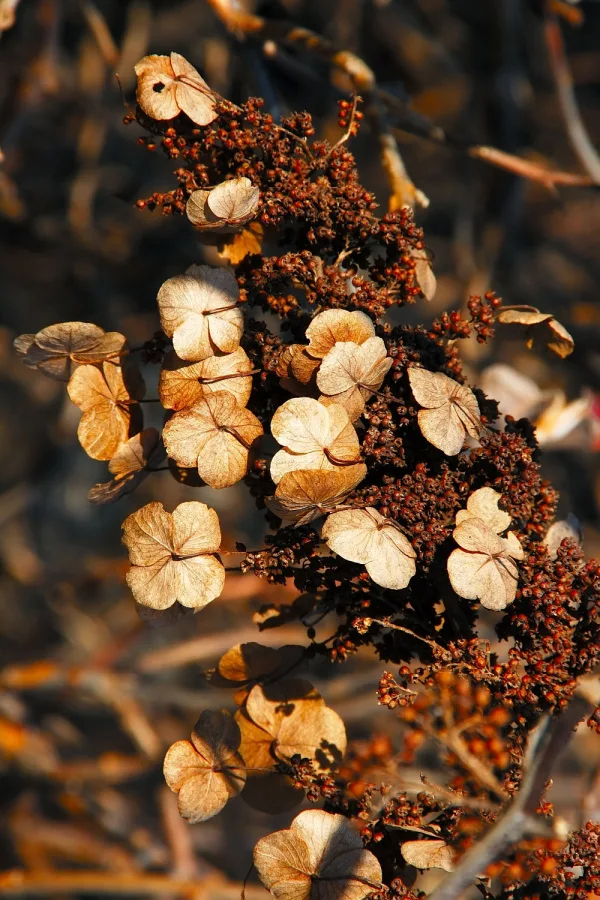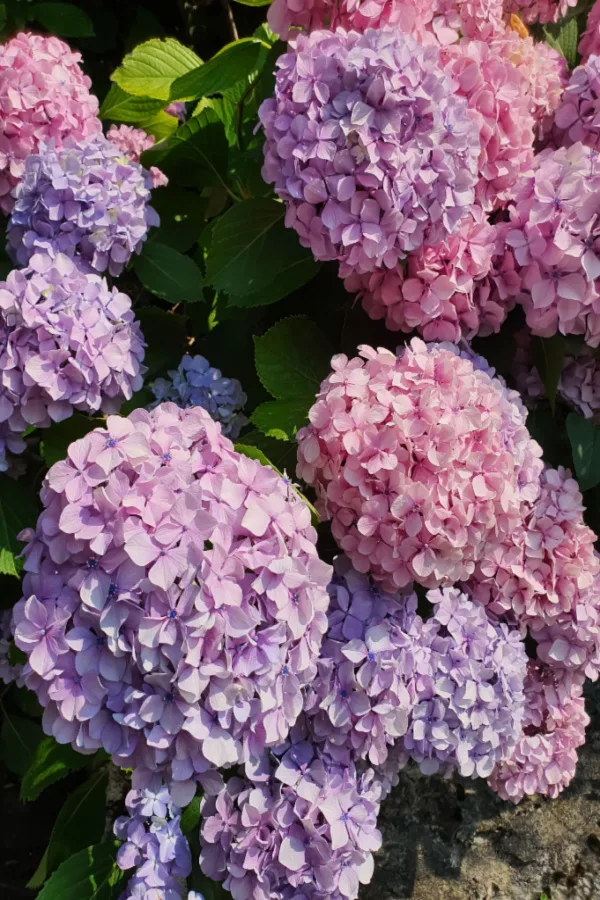When it comes to taking care of hydrangeas in the fall and preparing them for winter, there are three all-too-common mistakes that gardeners often make that can spell big trouble for their plants. Especially when it comes to whether or not their hydrangeas will bloom the following year!
Hydrangeas are one of the most spectacular perennial bushes around. With their bright foliage and large, showy bloom sets, they add incredible interest to any landscape. But for many gardeners, getting their hydrangeas to bloom year after year can be a challenge.
There can certainly be a lot of reasons hydrangeas fail to bloom. For starters, they might be growing in less than ideal soil. They can also be growing in a location that simply doesn’t get enough sunlight for strong blooming. And of course, if they fail to get enough water, it can lead to a lack of blooms too.
But as it turns out, a large majority of hydrangeas struggle to bloom not because of where they grow or the soil they grow in – but because of how they are cared for in the fall. In fact, more than not, when a hydrangea fails to bloom, it’s because of just a handful of mistakes gardeners make when preparing them for winter.
With that in mind, here is a look at 3 of those most common miscues – and how to avoid them to keep your hydrangeas healthy and blooming strong next year!
The 3 Most Common Mistakes Gardeners Make With Hydrangeas In The Fall
Pruning Summer Blooming Hydrangeas In The Fall
One of the easiest ways to keep hydrangeas from blooming is to prune them at the wrong time. And when it comes to summer blooming hydrangeas, fall is NOT the time to be cutting them back!
There are two distinct varieties of hydrangeas, summer blooming and fall blooming. And knowing which varieties you have in your landscape is extremely important when pruning.
Summer blooming varieties include two of the most common hydrangeas of all – Oakleaf and Bigleaf. These types of hydrangeas bloom early in the summer. Once they finish blooming, they continue to grow new branches and stems. And those stems contain next year’s blooms. So if you cut them back in the fall – you won’t get any blooms next year!
Fall blooming hydrangeas on the other hand bloom late. And they do so on wood and stems that have grown since spring of the same year. Pruning these back in fall is fine, as all of their blooms will come from new growth starting next spring.
If it sounds confusing, it doesn’t have to be. All you have to remember is that if your hydrangea blooms early in the summer – don’t prune it in the fall. And if it blooms in late fall, don’t prune it in the spring.
Failing To Deadhead Hydrangeas – 3 Big Mistakes Gardeners Make With Hydrangeas In The Fall
No matter what type of hydrangea you grow, it is always best to deadhead them regularly. Especially at the end of the growing season before winter arrives.
One important note here, deadheading is not the same as pruning and shaping. Deadheading is simply the task of removing the blooms from a plant. And in the case of hydrangeas, that means snipping off the head of the bloom right below from where it starts.
Why is this an important fall task? Because it saves an incredible amount of energy for the bush. Energy that cannot only help it survive through the winter, but more importantly, that can be stored in its roots to make next year’s blooms better than ever.

When hydrangea blooms start to fade, they still continue to draw power from the bush. At first, it does so in an attempt to heal and repair the dying bloom. But as it continues to die off, the bush then sends even more energy in an attempt to create a seed head.
All of that energy loss can come at the expense of more bloom production the following season. Whether your hydrangea blooms in the summer or fall, snip off its blooms before winter arrives!
Fertilizing Hydrangeas In The Fall – 3 Big Mistakes Gardeners Make With Hydrangeas In The Fall
The final common mistake gardeners make in the fall with their hydrangeas is to fertilize them. And although it probably sounds like fertilizing should be a good thing for the plant – it can actually cause it not to bloom at all when done in the fall.
For starters, hydrangeas do not require a massive amount of nutrients to bloom. In fact, when they have too many nutrients in the soil where they grow, it can make them grow larger instead of blooming.
The best time to feed hydrangeas (any variety) is in early spring and early summer. Beyond that, feeding them in the fall can cause over powering. Even worse, the unwanted late growth is also highly susceptible to winter damage.

Mulch & Water – 3 Big Mistakes Gardeners Make With Hydrangeas In The Fall
Two things you can do for your hydrangeas in the fall is to make sure they stay hydrated and mulched. Mulch will give them an added layer of protection for the upcoming winter. It will also help suppress competing weeds and help them retain moisture. For hydrangeas, a four inch thick layer of mulch is ideal.
As for water, hydrangeas still need to be getting about an inch of water per week until they go dormant. This moisture helps keep energy at the root level and helps with future bloom growth and bloom production. If you have a prolonged dry spell in the fall, watering can be huge for next year’s bloom set.
Here is to avoiding the 3 biggest mistakes that gardeners often make with hydrangeas in the fall – and to having bigger and better blooms than ever next year! For more fall care tips, check out our article on What To Do With Your Daylilies Before Winter.
Happy Gardening! – Jim and Mary
Jim and Mary Competti have been writing gardening, DIY and recipe articles and books for over 15 years from their 46 acre Ohio farm. The two are frequent speakers on all things gardening and love to travel in their spare time.
As always, feel free to email us at thefarm@owgarden.com with comments, questions, or to simply say hello! You can sign up for our free email list in the subscribe now box in the middle of this article. Follow us on Facebook here : OWG Facebook. This article may contain affiliate links.


